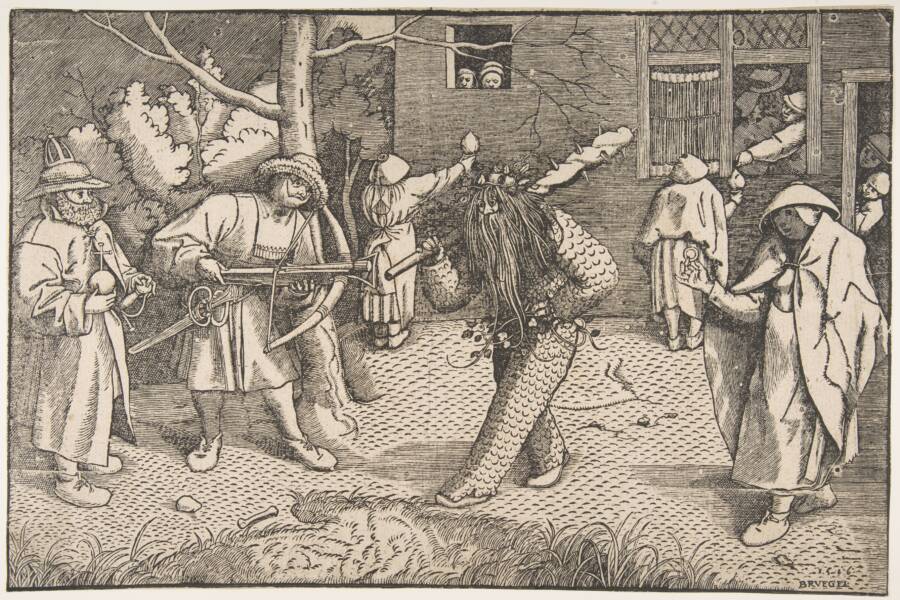Belsnickel, The Crotchety Fur-Clad Christmas Figure From Germany
Most likely, if you’ve heard of Belsnickel before, it’s because of an episode of The Office in which Dwight shows up to work dressed as Belsnickel, cracking a whip in his coworkers’ faces.
But, perhaps surprisingly, Belsnickel is not an obscure creation of the show; it’s a common folk legend among Dutch populations, originally hailing from Germany and brought over to America by immigrants, making it common among the Pennsylvania Dutch in particular, according to Penn Live.

Wikimedia CommonsA 1566 woodcut depicting Belsnickel walking through the center of town.
Think of Belsnickel as a sort of cross between St. Nick and Krampus — in fact, the name Belsnickel comes from the German word “bels,” which translates to fur, and “nickel,” referring to St. Nicholas.
Belsnickel covers his face with coal and wears animal furs with large deer horns, and he visits children in late December to ask them if they have been bad or good.
Of course, the question is just a formality for, like Santa, Belsnickel already knows.
Unlike other companions of St. Nicholas, Belsnickel travels alone. The first sign that Belsnickel is near is a tapping on the windows caused by the switches he carries as he sneaks through the dark. If you didn’t hear the tapping, however, fear not — the second sign is far more difficult to miss.
Suddenly, the front door will burst open and Belsnickel will stand before you in his tattered clothing, speaking in a gravelly voice as he moves about the room in a spastic manner.
And as Belsnickel asks the children if they have been naughty or nice, the loud thwack of his bundle of switches serves as a reminder of what will happen to the children who have been naughty.
In his other hand, he holds small treats for good children, usually small cakes, candies, and nuts.
But a visit from Belsnickel is not the end of the Yuletide season — in fact, it is usually just the beginning. Though he may appear to punish bad children like Krampus, Belsnickel actually serves as a reminder that those children still have a few days left to turn their act around before St. Nicholas and Krampus visit their homes.
In other words, if a child is still misbehaving by the time Krampus arrives, they have been adequately warned.





